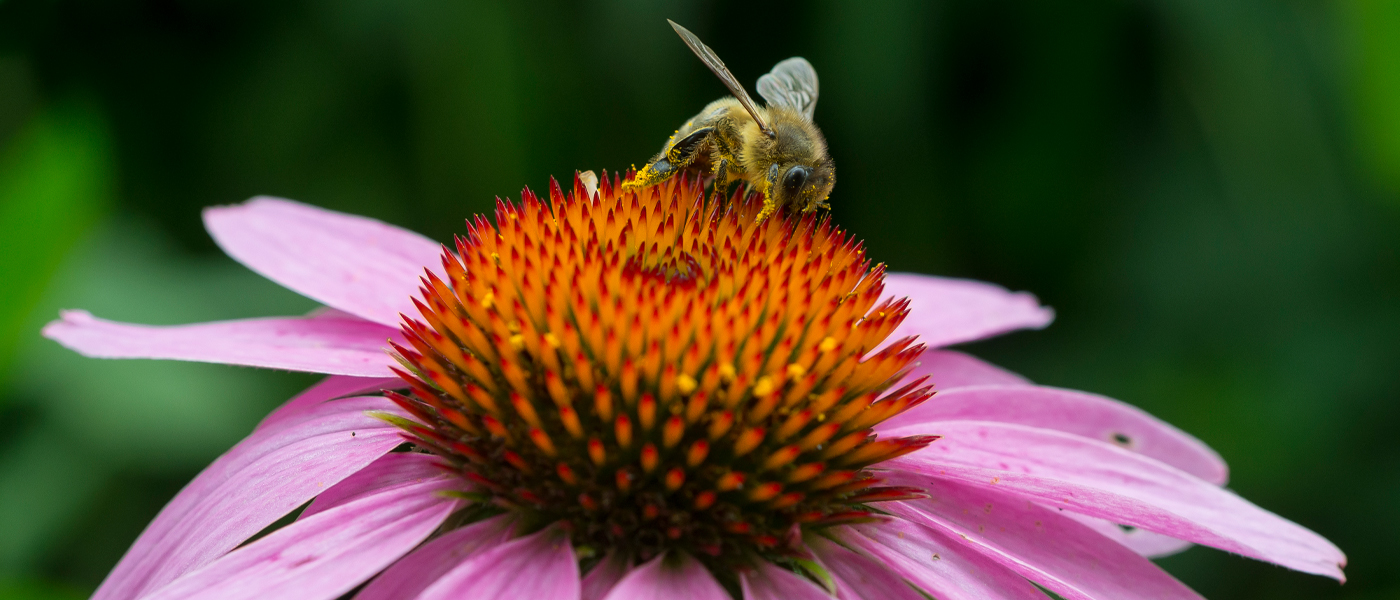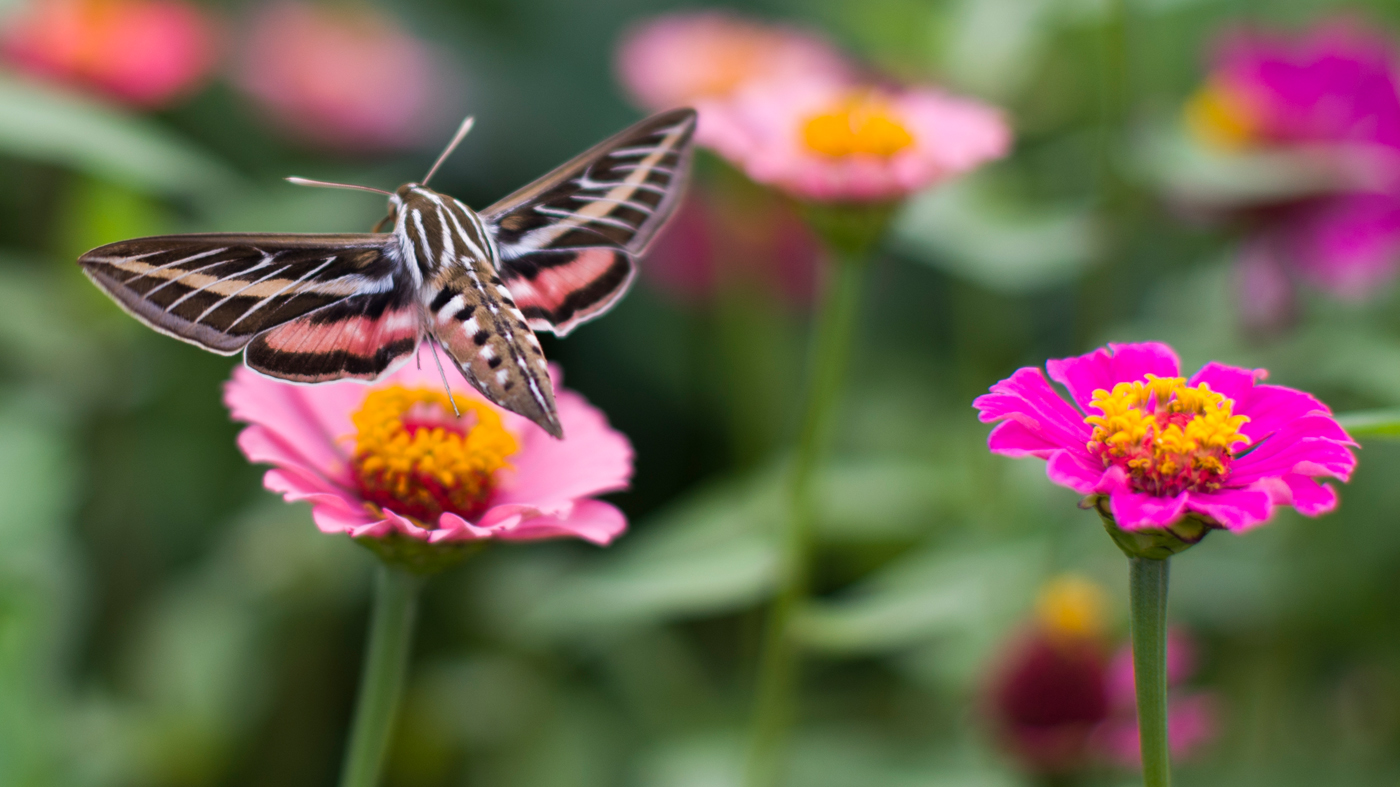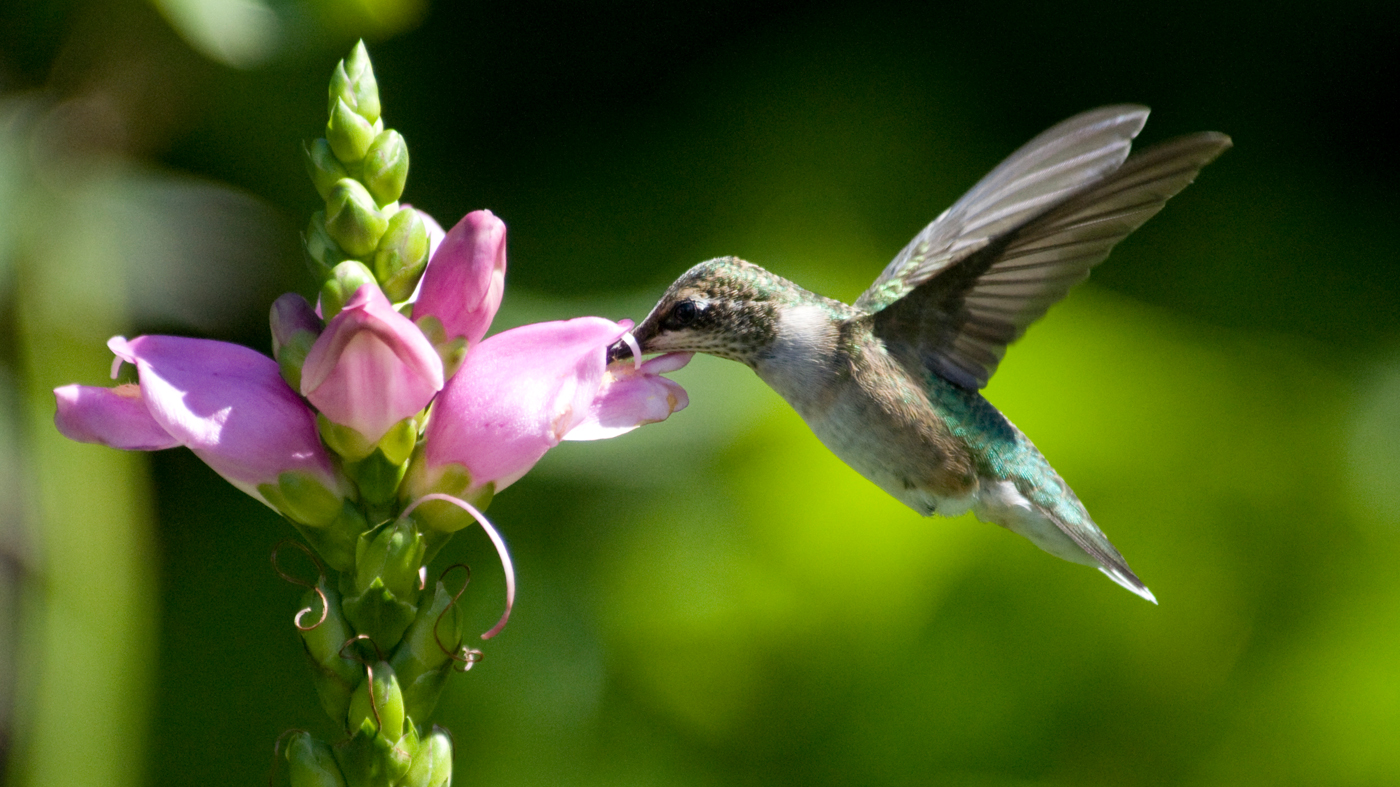
Bee pollinates coneflower (Echinacea), a hardy native plant selection for your garden.
Just off the beaten path at the Regenstein Fruit & Vegetable Garden (out back beyond the nut grove), there's a "secret" bed with a big mission: it's a pollinator strip, meant to attract bees and other busy insects to the smorgasbord of food plants growing in the garden.
Smart gardeners know that it's the presence of pollinators—the bees, butterflies, moths, beetles, flies, and other insects (plus hummingbirds)—that makes the difference in the health and fertility and productivity of wild plants, food plants, and landscape plants alike. Recent news about the die-off in honey bee colonies and the decline in monarch populations makes the issue of pollinators important for all gardeners.
Have a look at your yard/garden with a critical eye. Are your plants healthy and thriving, or do you have to chemically support them? Does your yard buzz with activity in summer, or is the air silent and still? Does your vegetable garden produce bumper crops, or are your harvests undependable and scant?

A white-lined sphinx moth (Hyles lineata)buzzes among the zinnias.
In short, are there ample pollinators in your yard?
At the Fruit & Vegetable Garden, we had great diversity in food crops, but much less diversity in the native flowering plants, grasses, shrubs, and trees that native pollinators need for food and shelter. Despite the presence of the Native Plant Garden nearby, we wanted native plants near our crops to encourage as much pollination/interaction as possible. Thus the pollinator strip.

A hummingbird visits.

A ladybug rests.
Think of a pollinator strip as a multipurpose garden bed
Increases Diversity
Senior ecologist Jim Steffen tells the story of adding a native plant strip next to the vegetable garden at his new home—in its first year, more than 25 species of native bees arrived, plus butterflies, moths, beetles, and tiny pollinating flies that hadn't been there before. Insect diversity improves dramatically when you provide the right habitat. A diverse insect population means that all the jobs that insects do are covered: pollinating plants, controlling "bad" bugs, minimizing the need for pesticides. Which plants support which insects? Our friends at the Xerces Society have organized helpful plant lists and information here.
Feeds a Crowd
It makes sense: the nectar and pollen in native plants is highly nutritious to native pollinators. These are the plants and insects that evolved together over time. Now, squeezed out by plowing in the fields, concrete in the cities, and lawns in the suburbs, the plants that pollinators need for food are disappearing. A pollinator strip feeds the insects…so they can pollinate the plants that feed you (apples, melons, soybeans, tomatoes).
Shelters the "Good" Bugs
Insects need homes, too. Ladybugs, parasitic wasps (they're good bugs!), and syrphid flies will happily set up shop in a native plant strip where they're protected from the weather and predators. Your native plants function as nesting sites…rest stops…launch pads...and nurseries (host plants) for insect larvae, too.
Speaking of predators, some "good" bugs are predators, too. Ladybugs, damsel bugs, and others eat the tiny "bad" bugs that can do great harm to your plants, like aphids and mites. By providing shelter for the good guys, you minimize/eliminate the need for pesticides to fight the bad guys.
Now look at your yard/garden again. Where might you add a pollinator strip in your yard? Around the perimeter of your garage? Behind an already established hedge? In the parkway between sidewalk and street? For a thorough discussion of pollinators, the plants they need, and the gardens that support them, check out this Pollinator Partnership guide.
Karen Zaworski is a garden writer and photographer who lives and gardens in Oak Park, Illinois.

